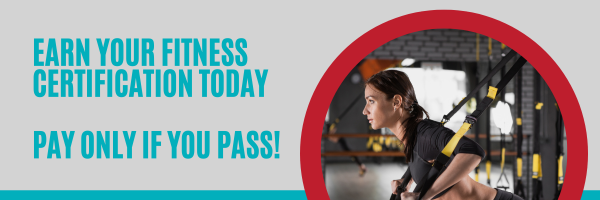Functional fitness has gained popularity in recent years for its emphasis on training the body for everyday movements and activities. By focusing on exercises that mimic real-life tasks, functional fitness aims to improve overall strength, stability, mobility, and coordination. In this blog post, we will discuss the benefits of functional fitness and provide tips on how to incorporate it into your workouts, as recommended by the American Sports and Fitness Association (ASFA).
The Benefits of Functional Fitness
Functional fitness offers numerous benefits, including:
- Improved muscle balance and stability: Functional exercises often engage multiple muscle groups simultaneously, promoting balance and stability throughout the body.
- Enhanced mobility and flexibility: Functional fitness focuses on movements that improve joint mobility and flexibility, which can lead to better overall performance and reduced risk of injury.
- Increased functional strength: Functional exercises help develop strength in the muscles that are crucial for daily activities, making it easier to perform everyday tasks.
- Better neuromuscular coordination: Functional fitness exercises challenge the body to coordinate movements and engage the right muscles at the right time, improving overall neuromuscular efficiency.
- Greater adaptability: Functional fitness prepares the body for a variety of physical demands, making it easier to adapt to new activities or sports.
Incorporating Functional Fitness into Your Workouts
The American Sports and Fitness Association (ASFA) suggests the following tips for incorporating functional fitness into your workouts:
- Focus on compound movements: Compound exercises, such as squats, lunges, and push-ups, engage multiple muscle groups and joints, making them ideal for functional fitness training.
- Incorporate balance and stability exercises: Including exercises like single-leg deadlifts, plank variations, and balance-focused movements can help improve your overall stability and coordination.
- Use free weights and bodyweight exercises: Free weights and bodyweight exercises allow for greater freedom of movement compared to machines, making them more functional and adaptable to real-life situations.
- Emphasize multi-directional movements: Include exercises that involve movement in multiple planes, such as lateral lunges and diagonal chops, to improve your ability to move efficiently in all directions.
- Include mobility and flexibility work: Stretching, dynamic warm-ups, and yoga can help improve your range of motion and overall mobility, making functional movements easier to perform.
Functional Fitness Exercises to Try
The American Sports and Fitness Association (ASFA) recommends incorporating the following functional exercises into your workout routine:
- Goblet Squat: Holding a kettlebell or dumbbell close to your chest, perform a squat with your feet shoulder-width apart. This exercise engages your entire lower body and core, mimicking the movement of picking up a heavy object from the ground.
- Push-up to Side Plank: Perform a push-up and then rotate into a side plank, extending your arm toward the sky. This exercise targets your chest, shoulders, and core while improving stability and balance.
- Farmer's Walk: Hold a heavy dumbbell or kettlebell in each hand and walk for a set distance or time. This exercise engages your entire body, particularly your grip, shoulders, and core, and simulates carrying heavy objects.
- Medicine Ball Slams: Hold a medicine ball overhead and forcefully slam it into the ground, engaging your core and using your entire body to generate power. This exercise improves total-body power and coordination, replicating the motion of lifting and throwing an object.
- Step-ups: Step up onto a bench or box with one foot, followed by the other, and then step back down. This exercise engages your lower body and core and mimics the action of climbing stairs or stepping onto an elevated surface.
By integrating functional fitness exercises into your workout routine, you can develop a well-rounded fitness program that prepares your body for the demands of everyday life. The American Sports and Fitness Association (ASFA) encourages individuals to experiment with different functional exercises to find the best movements for their unique needs and goals.
When incorporating functional fitness into your workouts, it's essential to prioritize proper form and technique. This will help ensure the effectiveness of the exercises and minimize the risk of injury. It's also important to progress at your own pace, gradually increasing the intensity and complexity of the exercises as you become more proficient.
In addition to functional fitness exercises, make sure to maintain a balanced fitness routine that includes cardiovascular training, resistance exercises, and flexibility work. This comprehensive approach to fitness will help ensure overall muscle balance, improve your mobility, and reduce the risk of injury.
Functional fitness is not only beneficial for athletes and fitness enthusiasts but also for individuals looking to improve their overall quality of life. By focusing on movements that mimic real-life tasks, you can make everyday activities easier and more efficient, enhancing your overall health and well-being.
Remember that consistency is key when it comes to achieving your fitness goals. By regularly incorporating functional exercises into your workout routine and following the guidance of experts like the American Sports and Fitness Association (ASFA), you can effectively improve your functional strength, mobility, and performance in your daily life and chosen sports or physical activities.





